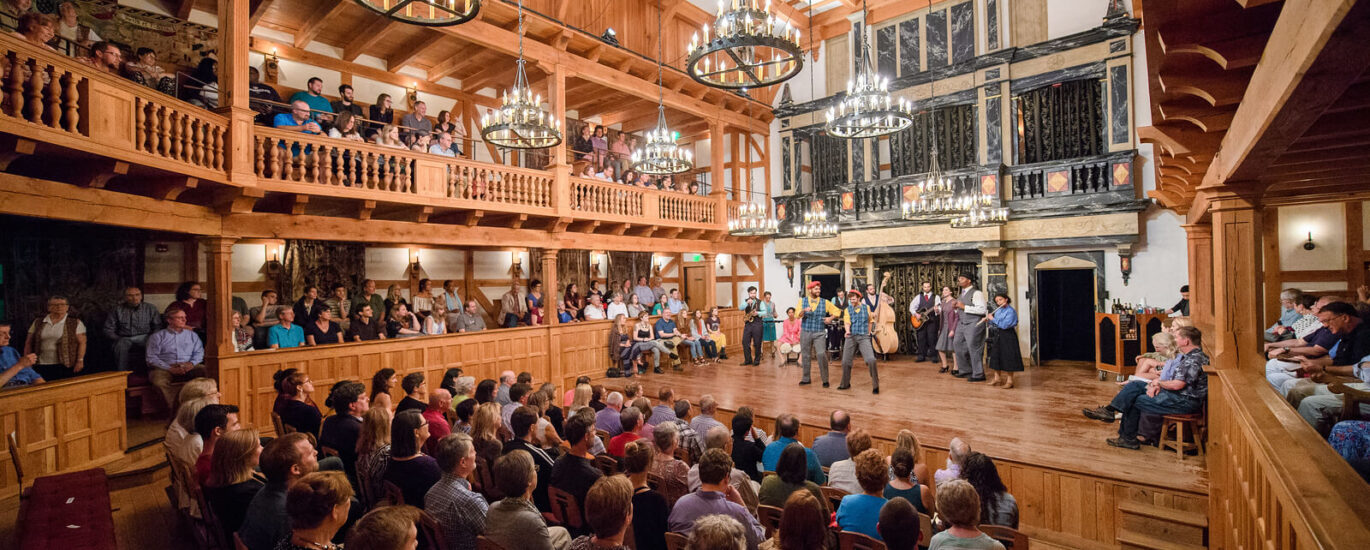Welcome to Blackfriar’s Playhouse, an enchanting stop on your journey through the rich tapestry of theatrical history. Situated in Staunton, Virginia, this playhouse isn’t just a building; it’s a portal to the past, echoing the artistry and innovation of the Elizabethan era. As you stand here, imagine the bustling streets of 16th-century London—where theatre was not just entertainment, but a way of life.
The story of Blackfriar’s Playhouse begins in the heart of London, where the original Blackfriars Theatre was established in 1596 by James Burbage, a pioneering figure in theatre architecture. Burbage, with a vision to create a more intimate and protected environment for theatrical performances, built the Blackfriars Theatre inside the city limits. This was a bold move, as most theatres were banished to the outskirts due to city regulations and the disdain of London’s elite.
However, Burbage’s vision was initially thwarted. The residents of Blackfriars, an affluent area, opposed the theatre, fearing the disruption it might bring. Thus, Shakespeare and his company, the Lord Chamberlain’s Men, continued performing at the open-air Globe Theatre until 1608, when they took over Blackfriars and transformed it into a winter venue, marking a significant evolution in English theatre.
The Blackfriars Theatre became a hub of creativity and innovation, hosting performances that pushed the boundaries of drama, including works by Shakespeare himself. The intimacy of the indoor space allowed for a greater focus on dialogue and character development, setting the stage—quite literally—for modern theatre.
Fast forward to the 21st century, and Blackfriar’s Playhouse in Staunton emerges as a faithful reimagining of this iconic space. It stands as the world’s only re-creation of Shakespeare’s indoor theatre, offering an authentic experience of how plays were originally staged. The playhouse is a testament to the enduring legacy of Shakespeare and the timeless appeal of his work.
Not only does the playhouse transport visitors back to the Elizabethan era, but it also serves as a cultural beacon in today’s world. It hosts a variety of performances, from classic Shakespearean dramas to contemporary plays, engaging audiences with the same vigor and passion that characterized the original Blackfriars Theatre.
As you explore Blackfriar’s Playhouse, consider the influential figures who have graced its stage. From Richard Burbage, the leading actor of the Lord Chamberlain’s Men, to modern-day performers who continue to bring Shakespeare’s words to life, the playhouse is a living museum of theatrical history.
In a world where digital media dominates, Blackfriar’s Playhouse offers a refreshing return to the roots of storytelling. It reminds us of the power of live performance and the communal experience of theatre—a legacy that continues to inspire and entertain.
Today, as you stand within these hallowed walls, take a moment to appreciate the artistry and craftsmanship that have gone into creating this space. Every detail, from the timber structure to the candlelit ambiance, is designed to transport you to another time, making Blackfriar’s Playhouse not just a theatre, but a journey through history.





